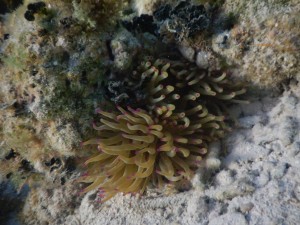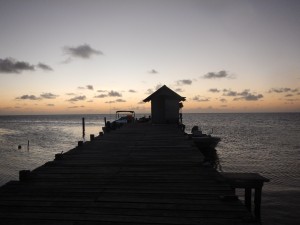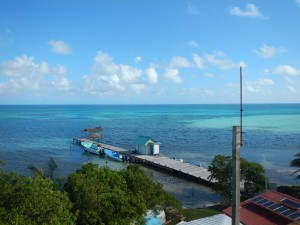One week in the Rainforest. One week on the coral reef. As different as the two ecosystems sound, in a lot of ways they are similar. Both are hotspots for biological diversity, driven by diverse geography and topographical features which create countless niches to be filled. The niches are filled in fact by huge ranges of organisms that have adapted to suit their microenvironments. For example in both the rainforest and in coral reefs, light penetration plays a role in determining the organisms that will survive and thrive in different locations. High light-need species reach the heights of the canopy in the rainforest; they reside in shallow waters on the reef. Other factors include resilience in inclement weather, particularly in countries like Belize. Belize is affected by tropical weather systems such as hurricanes, which may reshape the ecosystems and the organisms that are not sheltered must be able to survive the effects. This is true in both the forest and the reef, as exposed species in either are at risk.
Another similarity I have noticed is the apparent paradox of high biological diversity in spite of nutrient poor environments. Both reefs and forests support incredible richness and abundance of life. In nutrient poor environments this is made possible by the efficient cycling of the nutrients that are present. In fact, the ecosystems themselves are in a way nutrient rich, in that the nutrients are usually actively being used by the occupants.
This course was what I expected, but better. I had expected to find a bit of direction and to maybe make some friends. I have found such reassurance in this course: reassurance of wanting to pursue biology and perhaps marine biology in particular. And the group of people on this trip are each individually important in creating the amazing group dynamic we had. This also includes the instructors, who are passionate about the material and make me feel passionate about it as well.
My favorite part of this trip was snorkeling the fore reef. I remember letting myself bob in the waves and then someone pointed down. There was a huge spotted eagle ray swimming right below us. Seeing something like that in its natural environment was incredible. My least favorite part of this trip was the itching. Between chigger, tick, sand fly, and mosquito bites, there are more bites on me than I can count. Incidentally I apparently also have a fairly strong reaction to most of those bites. I have never before woken up in the middle of the night due to itching so badly.
Things I have learned:
- Sometimes it is easiest to believe that there is a simple right and wrong, but that’s hardly ever the case. This trip reminded me of that. It would be nice to say that all poaching is inexcusable and conservation should be the easy answer. That, however, is not the world we live in. Hearing more about conflicts between Guatemala and Belize have reminded me of that. I’m going to try very hard not to forget it.
- I know that in pursuing science, sometimes the answers we end up with are not the ones we want to hear. I will not always be correct. In fact, most of the time I will probably be wrong.
- There are a lot of things worth trying to save in this world. I cannot save all of them. I am not in control. So I am going to try and save a small piece of it.
- [Bonus] Ocelots/jaguars/a-lot-of-animals sound really wierd
Thank you.




